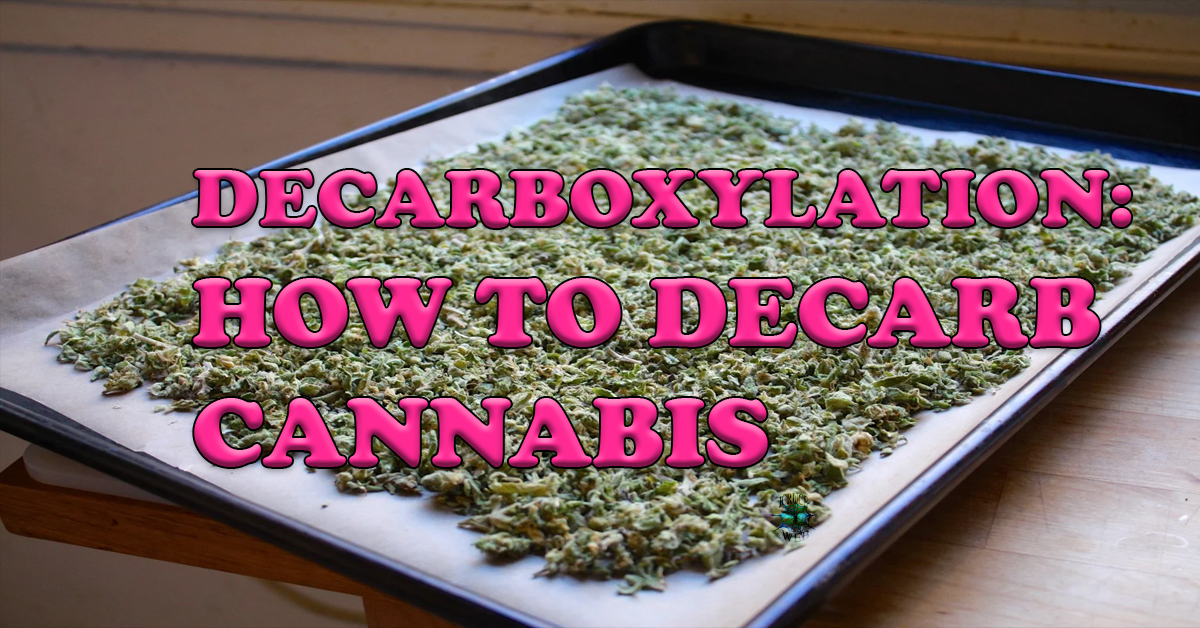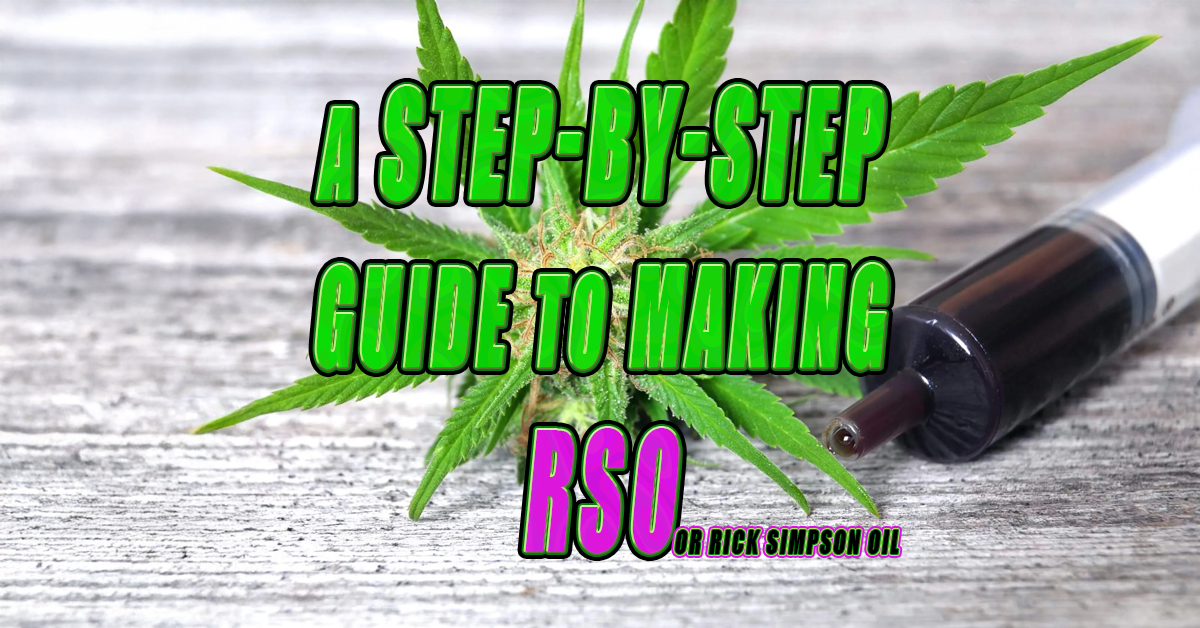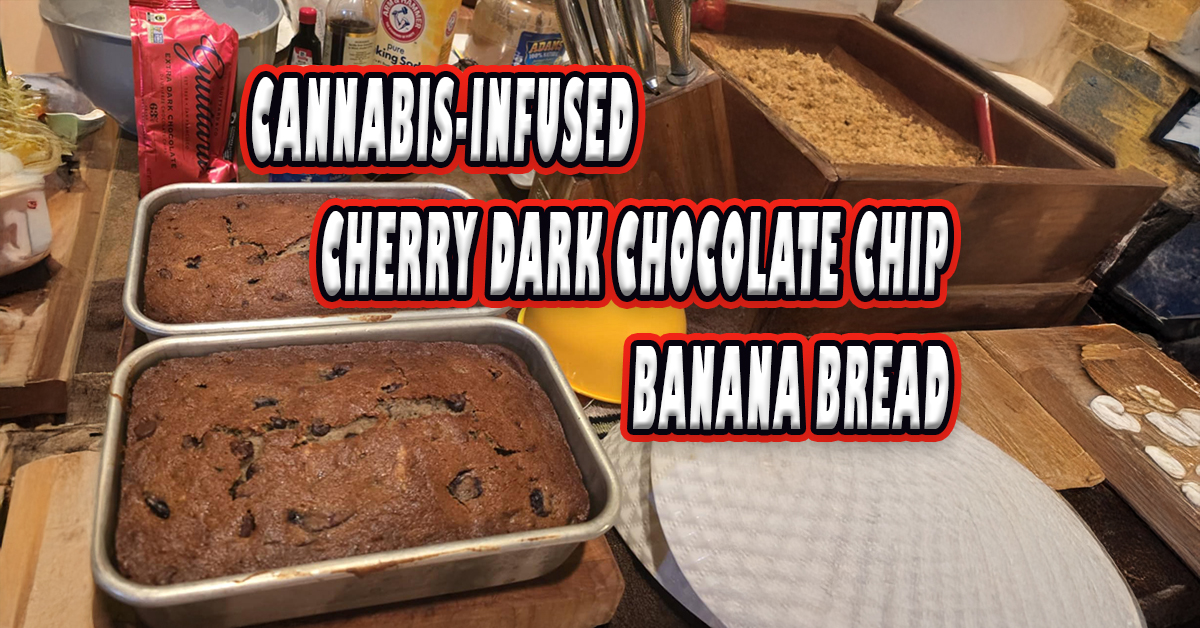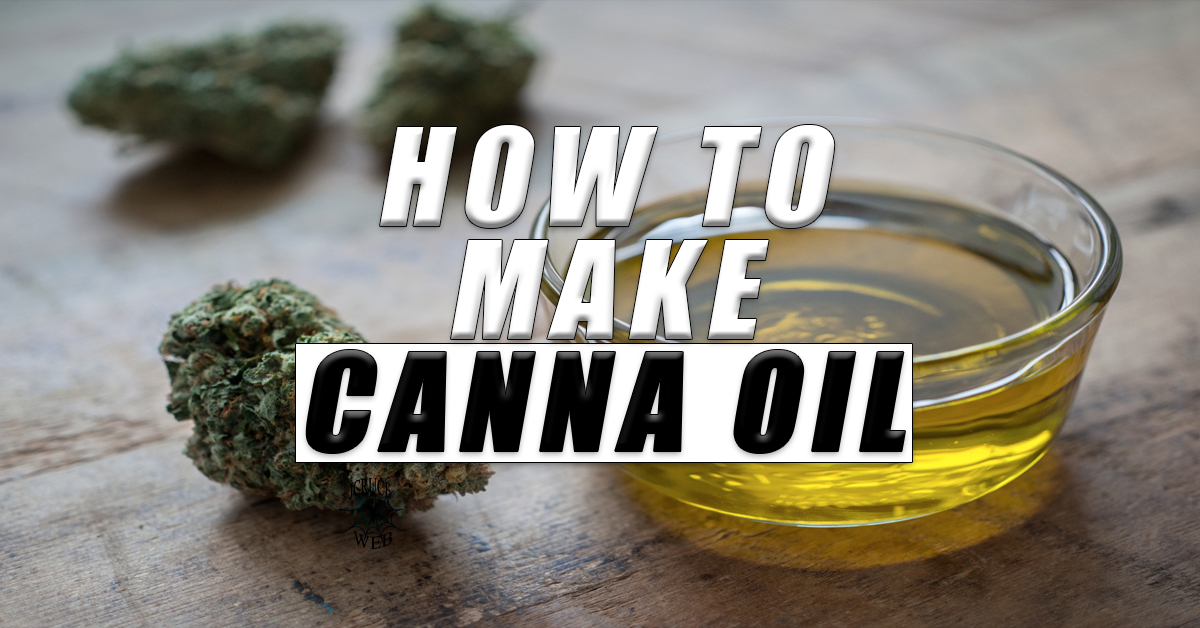Decarboxylation is the process of heating cannabis to activate its psychoactive compounds, like THC and CBD, by removing a carboxyl group. This step is essential if you’re planning to make edibles or other infused products, as raw cannabis won’t produce the desired effects without it.
Here’s a simple guide:
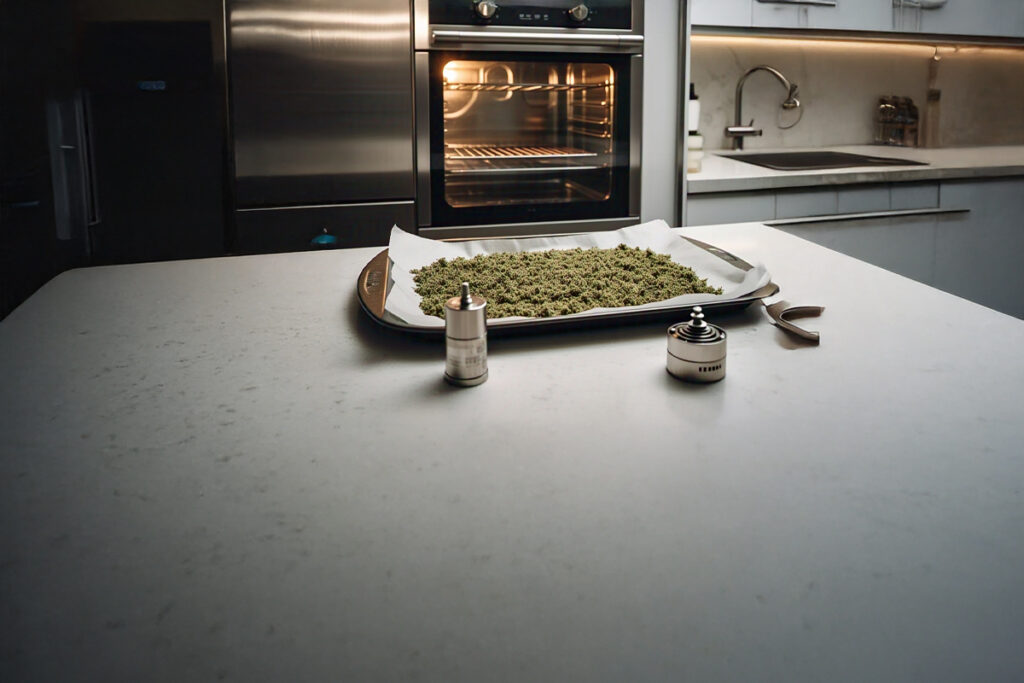
What You’ll Need:
- Cannabis (flower/bud)
- Baking sheet
- Parchment paper (optional, but helps with cleanup)
- Oven
- Grinder (optional, for breaking it up)
Steps:
- Preheat the Oven: Set it to around 220-240°F (105-115°C). This temperature range is ideal for decarboxylation without burning off too many terpenes (the aromatic compounds).
- Break Up the Cannabis: Use your hands or a grinder to break the buds into small, loose pieces. Don’t grind it into a fine powder—aim for a coarse consistency.
- Spread It Out: Line your baking sheet with parchment paper and spread the cannabis evenly in a thin layer. This ensures consistent heating.
- Bake: Place the tray in the oven and heat for 30-40 minutes. Check occasionally to avoid scorching—stir it lightly if needed. The cannabis should turn a slightly darker, toasty brown and smell fragrant.
- Cool Down: Remove it from the oven and let it cool completely. It’ll be dry and crumbly.
- Store or Use: Once cooled, it’s ready to use in recipes (like infusing into butter or oil) or store in an airtight container in a cool, dark place.
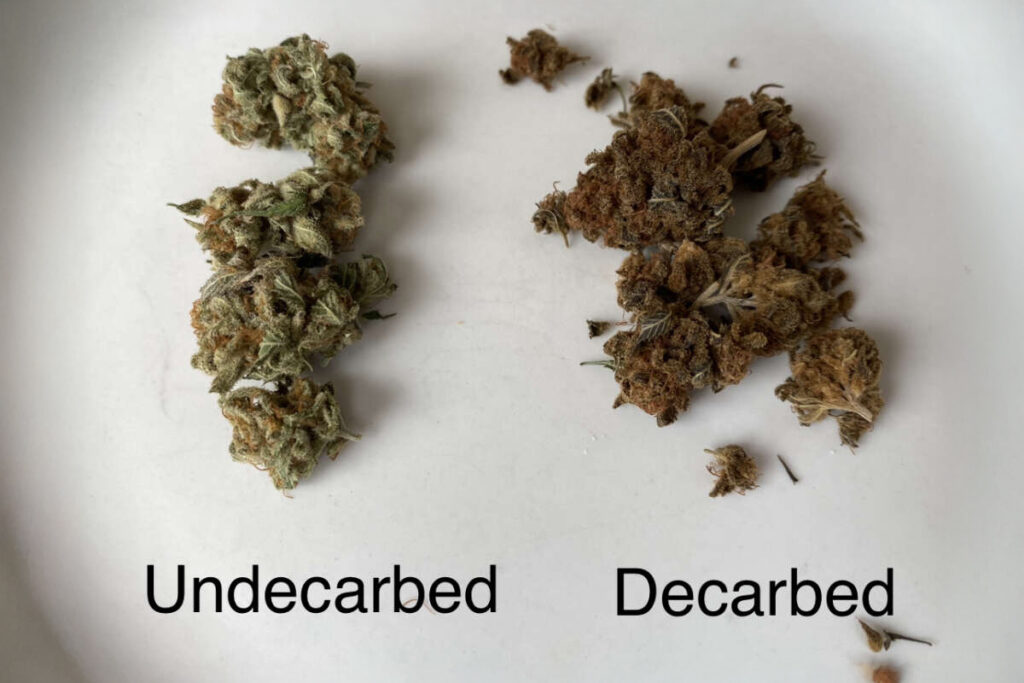
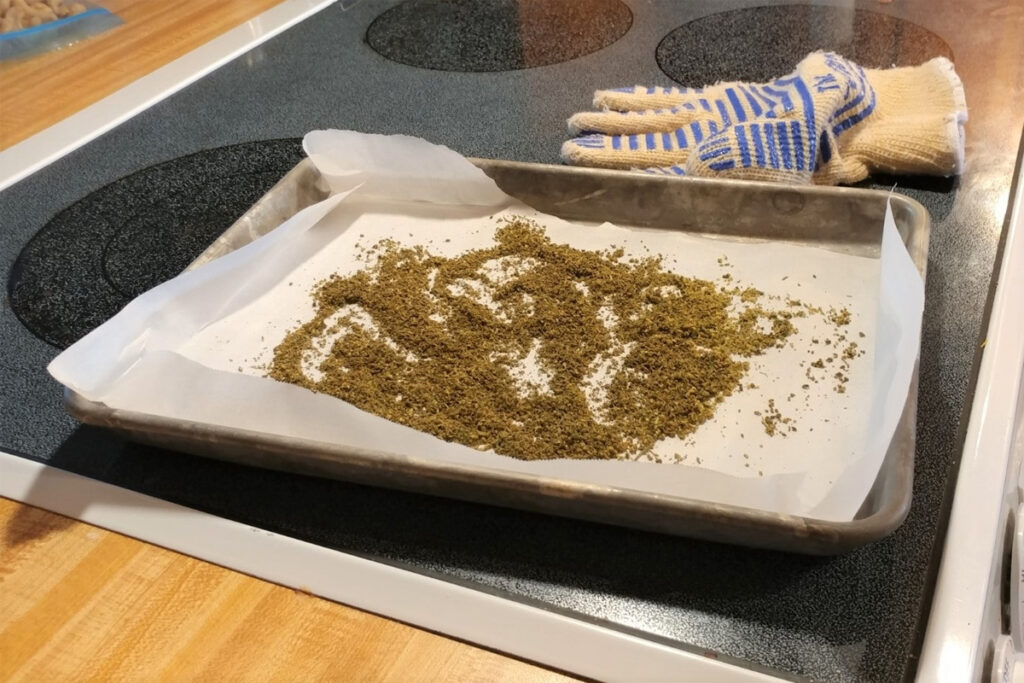
Tips:
- Lower temps (around 220°F) preserve more terpenes but take a bit longer; higher temperatures (up to 250°F) speed it up but might degrade some flavor.
- Ventilation is key—your kitchen will smell strongly of cannabis.
- If you’re unsure it’s fully decarbed, a slightly longer bake will not hurt, but don’t exceed 300°F, or you’ll risk vaporizing the good stuff.
That’s it! Let me know if you need help with the next step, like making cannabutter or dosing.
